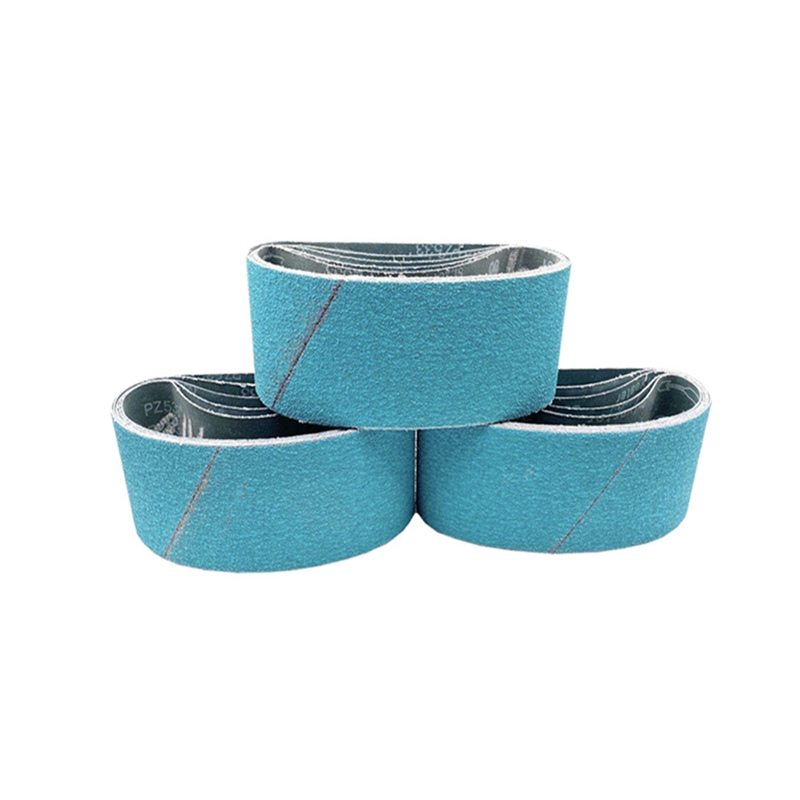I. "Four not allowed" to strictly control the fire in dormitory
No matter if it is a student dormitory or a staff dormitory, the personnel and articles are more concentrated, and it is easy to neglect prevention and insult. Once a fire occurs, it will pose a great threat to life and property. The Chongqing Jiangbei Fire Fighting Team listed its “four inaccuracies†and strictly controlled the occurrence of fire.
First, it is not allowed to connect the power supply. In general, do not press the electricity specification in the dormitory, install the fuse of the circuit without permission, when the circuit is overloaded or has the breakdown, the fuse can't fuse and cut off the circuit in time, cause the electric wire to heat up and catch fire easily. At the same time, some hostels also have the phenomenon of random lines. Fire warnings, whether it is staff quarters or student dormitories, must strictly abide by the safety management regulations and do not personally disturb the access wires.
Second, do not lie in bed and smoke cigarettes. Everyone knows the dangers of cigarette butts. Although cigarette butts are small, they are open flames. Fire caused by cigarette butts is not uncommon. The fire department introduced: According to the determination, the surface temperature of cigarette butts reaches 200 to 300 degrees Celsius, and the center temperature reaches 700 to 800 degrees Celsius, which is much higher than the burning point of common wood and paper. Tossing cigarette butts is prone to cause fire, especially when the trash can is often placed near the coffee table or sofa. Once the trash can catch fire, it is easy to ignite the surrounding articles and cause fire.
Third, do not burn debris. Due to the narrow space in the dorms, there will inevitably be the phenomenon of accumulation and disorder. If you burn trash in a dormitory or corridor, once the unburned scraps of paper are blown by the wind and fall to flammable materials, fire may occur.
Fourth, not arbitrarily high-power appliances. In cold winter weather, many people will use electric heaters, heat quickly, electric blankets, etc. These appliances have high power, and the wires are easily overloaded, causing the wires to overheat and the insulation to melt and short circuit. Eventually a fire breaks out. Fire Reminder: In the dormitories, rice cookers, electric heaters, heat quickly, alcohol stoves and other electrical appliances are not allowed to use.
Second, find high-rise building fire safety hazards
With the rapid development of the city, high-rise buildings spring up. After you buy a house and live in a high-level residence, while enjoying a beautiful new life, do you have to pay attention to whether the fire extinguishers and fire hydrants outside your home are in good condition? Have you found that the evacuation channel in the building has been closed? Is the high level of your residence really safe? Chongqing Lushan Fire Tips: The fire safety relationship is tens of thousands of households. Once a fire occurs in a high-rise building, the fire spreads too quickly. If the residents in the building do not evacuate in time, they will most likely cause casualties. It is safer for seniors who want to live in their own homes. Everyone needs to work together. Everyone should come and find faults and clear away the hidden fire hazards.
1 , evacuation channel is blocked
In some high-rise communities, some residents pile up debris in stairwells, evacuation gateways, etc., and the debris is mostly flammable and flammable products such as newspapers, cartons, and old furniture. Once a fire breaks out in a high-rise building, the debris piled up in the stairwell will not only encourage the fire, but it will also become a major obstacle for the residents to escape.
2. Firefighting facilities are damaged
Fire-fighting facilities and equipment in high-rise buildings are like the heart of a high-rise building safety system. If fire facilities are incomplete or damaged, once a fire occurs in the building, residents cannot use fire extinguishers or fire hydrants to save the initial fire, thus missing the most. Good fire self-save time.
3 , fire exits are occupied
The firefighting pass is a special dedicated road for fire trucks to use for disaster relief. However, in some high-rise residential communities, the situation of poor fire exits is very common and even becomes a parking space for private cars. If there is a fire in a high-rise community, firefighters will be greatly hindered from extinguishing fires.
4 , Evacuation floors are neglected
When a fire occurs in a high-rise building, firefighters are unlikely to rescue them from outside the building. When the residents in the building cannot escape to the building, they can evacuate to the refuge floor in the high-rise building. Residents must pay attention to the evacuation instructions in the building, and clearly understand the location of the evacuation floor so that they can be prepared.
Pay attention to fire, peace and you. Only through joint efforts of all can we make the high-level of our residence more secure.
Third, winter kitchen fire prevention
According to statistics, about 150,000 fires occur each year in the country , of which kitchen fire accounts for about one-fifth of the total, and deaths account for more than 35% of the total . Kitchen fire hazards are more common and urgently need rectification and elimination. So, do you know what fire hazards exist in the kitchen? How to correct these hidden dangers? Chongqing Jiangjin Fire will tell you one by one.
In daily life, kitchen fires often occur, mainly due to people leaving when cooking and cooking, gas leaks and fires, and oils in range hoods.
It is recommended that the public compare the following fires:
1. Long-term use of gas pipelines, aging, cracking phenomenon;
2. Excessive grease on range hoods;
3. Children go in and out of the kitchen, playing with gas, stoves and even playing with fire.
How should these fire hazards be corrected?
1. Use the olfactory inspection method. Smell the smell of rotten eggs near the gas line, indicating that there may be gas leaks; brush leak check: Use a soft brush dipped in soapy water, detergent solution and other foaming agents to smear pipelines that may leak, if found Bubbles are generated, indicating that there is a leak here. After the leak is found, the pipeline must be replaced immediately;
2. The range hoods should be cleaned regularly to avoid oil splashes caused by the oil pans igniting the range hoods.
3. Cooking and cooking, so that people go off and power off;
4. Inform children about the danger of playing with fire, educate the children not to play with fire, and place matches and lighters out of reach of children; 5. Do not tamper with, install gas appliances and appliances.
Fourth, ancient buildings fire safety tips
At 12:10 on December 2017 Ri 39 points, Mianzhu Jiulong Kowloon Temple main hall caught fire due to the large wind field, quickly ignited adjacent founder of the house, adjacent Lu Fota. As of 10 afternoon 16:30, the fire has been extinguished. The fire caused the main hall of the Nine Dragons Temple, the founder's house, and the Buddha's Pyramid to be destroyed. The burned area was more than 800 square meters and there were no casualties. Currently, the cause of the accident is under investigation.
The fire of ancient buildings will cause double losses of property and cultural heritage. Therefore, it is very important to do a good job in fire safety work of ancient buildings. Here, Chongqing Jiangbei Fire Protection issued fire safety warnings for ancient buildings and hoped to make the history of ancient buildings through social efforts. Cultural values ​​are inherited.
First, use electricity with fire. Workers in ancient buildings, especially those living in ancient buildings, must pay special attention to the safety of using electricity by fire. The installation of electrical lines must comply with the fire control regulations. Do not whip up the cables privately, and do not make fire in places where fire is strictly prohibited. For rice, do not casually burn trash in ancient buildings.
Second, we must strengthen fire inspections. Most of the ancient buildings were mainly wood structures. Because of their age, most of them were not treated with fire prevention. Therefore, special personnel must be assigned to carry out fire safety inspections. Once fire protection facilities are found damaged or the electrical lines are broken down, the staff must repair or replace them in time. Reduce the possibility of fire accidents.
Third, we must do a good job of fire safety management. Corresponding fire-fighting facilities and equipment must be provided in the ancient buildings, and they should remain intact and effective. Effluent passages and safe exits should be maintained, and evacuation signs and emergency lighting should also be set up so that firefighters and tourists can escape.
Fourth, we must strengthen firefighting propaganda. Some ancient buildings are local tourist resources, and the flow of people during holidays is relatively large. Therefore, it is necessary to strengthen the training of the staff in ancient buildings, regularly carry out fire-fighting knowledge-raising activities and fire drills, and improve the staff’s “four capabilities†to ensure the occurrence of When the fire broke out, the staff knew how to save the first fire, how to guide the evacuation of tourists, and how to escape and save themselves.
In addition, when citizens visit the ancient buildings, they must also raise their awareness of fire safety. Do not throw cigarette butts to avoid fire.
The information in this article comes from the Internet and was reorganized and edited by China Rescue Equipment Network.
Sanding Belt
Abrasive belt is a belt-shaped tool that can be ground and polished, which is made by bonding abrasives to flexible materials such as paper and cloth with a binder. It is a main form of coated abrasives. Its basic composition is: base material, abrasive and binder, collectively called the three elements of abrasive belt. Abrasive belt is the main tool of the sanding process. Abrasive belt grinding is a soft grinding method, which is a compound processing abrasive tool with multiple functions of grinding, grinding and polishing.

Abrasive tools are tools for grinding, grinding and polishing. Most of the abrasives are artificial abrasives made of abrasives and bonding agents, and natural abrasives are also directly processed from natural ore. In addition to being widely used in machinery manufacturing and other metal processing industries, abrasive tools are also used in the processing of non-metallic materials such as food processing, paper industry and ceramics, glass, stone, plastic, rubber, and wood.
Abrasives are divided into natural abrasives and artificial abrasives. All materials that can be used for grinding or grinding in nature are collectively referred to as natural abrasives.

Natural abrasives mainly include: natural corundum and garnet
Artificial abrasives mainly include: white corundum, brown corundum, silicon carbide, zirconium corundum, synthetic diamond, cubic boron nitride.
How to choose a suitable abrasive belt and further improve the smoothness and flatness of sanding is a very important issue in the use of abrasive belts. Due to the differences in the three major components of abrasive belts and various characteristic factors, abrasive belts can be divided into many varieties according to different grinding objects, grinding conditions and grinding requirements. The following is the classification of abrasive belts according to abrasives. Different abrasive belts are suitable for different products. The following types of belt operations are: automatic grinding, mechanical hand grinding, desktop grinding, and manual tool grinding.

Types of abrasive belts (according to abrasives):
1: Accumulated abrasive belt
Application: Widely used in polishing various non-alloy, low-alloy and high-alloy steel, stainless steel, brass, bronze and other non-ferrous metals. Good self-sharpening, long service life, uniform grinding volume and uniform surface roughness.
2. Brown corundum belt
Application: Widely used in metallurgy, machinery, shipbuilding, wood, building materials, textile printing and dyeing industries. Grinding and polishing of bamboo and wood products, decorative panels, stainless steel, non-ferrous metals and other complex surfaces. Fast cutting, heat resistance, long service life, efficient wear resistance.
3. Ceramic abrasive belt
Application: Widely used in grinding chromium steel, chromium-nickel steel, stainless steel, high-alloy steel, nickel-based alloy, titanium alloy, brass and bronze, etc., with good self-sharpening, strong grinding, and large removal of grinding materials.
4. Silicon carbide belt
Application: Widely used in the grinding and polishing of brass, bronze, titanium alloy, aluminum alloy, glass, ceramics, minerals, stone, rubber, and synthetic materials. The sand surface is sharp, with very high strength and grinding ability, suitable for grinding medium and high density plates. The bucky has strong tension and ultra-wide sub-tension, which can be used for ultra-large abrasive belts.
5. Zirconium corundum abrasive belt
Application: Widely used in the grinding and polishing of steel, alloy steel, cast iron and non-ferrous metals, medium load or heavy load powerful grinding. The rigid polyester fabric is resistant to strong tension and impact, has high abrasion resistance, and has excellent comprehensive cost performance.
We distributes and wholesales various brands of Bonded Abrasives , Abrasive Sanding Disc, Cutting Wheels , Abrasive Flap Disc, Flap Wheels , Flap Disc Backing Pad, Flap Disc Adhesive , and Surface Conditioning Product etc, and enjoy a high position among consumers.

Belt Sander Paper,abrasive sander belt,GXK51 sanding belt,Sanding Belt,Delta Belt Sander
Zhengzhou Jiading Abrasive Manufacturing Co.,Ltd , https://www.jd-abrasives.com